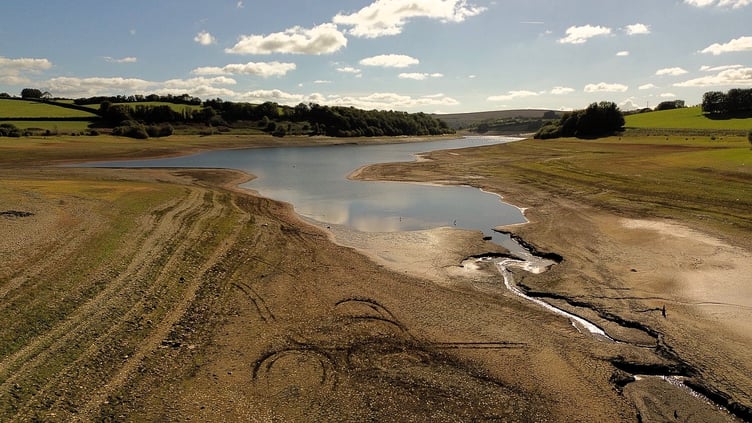THE drop in Wimbleball reservoir’s water level to almost a quarter after the hottest-ever summer, second only a record low in 2022 of 17 per cent, is nothing to worry about, South West Water (SWW) said this week.
Social media posts showed bare muddy banks which forced sailors to drag boats over exposed shores, warnings about staying on paths and keeping dogs on leads, and fears of water restrictions.
But SWW senior water resources manager Paul Merchant told the Free Press: “While being lower than normal for this time of year, storage levels at Wimbleball have been increasing daily over the past few weeks and will continue to do so.
“The low levels in the reservoir are no reason to worry.
“The very warm summer meant higher levels of water usage than normal and more demand on our resources.
“That is exactly what we have reservoirs for and that is what we would expect to see.
“By design, the reservoirs provide us with storage that we need during warm and dry weather and we drain these down knowing they will refill during the wetter months of the year.
“You might think South West Water takes water directly from reservoirs to supply customers but that is not always the case, and for Wimbleball, water is released into the River Exe to be taken out at Tiverton and Exeter and treated at local water treatment works.
“When the river levels drop to a certain point we release stored water from Wimbleball into the River Exe to ensure the river maintains good flows to support the wildlife and natural environment.
“Because of the warm and dry summer we had this year the river levels were often low and so we released more water from Wimbleball than we might do in other years.”
Built 50 years ago on 600 acres of farmland, the reservoir cost £16.5 million (£208 million in today’s money) and when full holds more than 21 billion litres of water, enough to supply the South West peninsular for 44 days and a town such as Bridgwater for nine-and-a-half years.
Its 160 feet high dam took four years to build and holds back a force of three tons a square foot.
Mr Merchant said a winter pumping scheme meant SWW was able to put excess water from the River Exe back into the reservoir ready for when it was needed next the summer.
This could be used to provide an average of about 75 million litres a day during this period and provide a boost to storage levels.
The company said this, plus winter rainfall and natural drainage catchment for the area, will drive up storage levels over the winter in preparation for next summer.
Mr Merchant said: “While current levels at Wimbleball are not causing concern for us, a growing population and more prolonged periods of dry weather, a suggested result of climate change, means the company remains committed to improving water resilience in the South West.”





Comments
This article has no comments yet. Be the first to leave a comment.